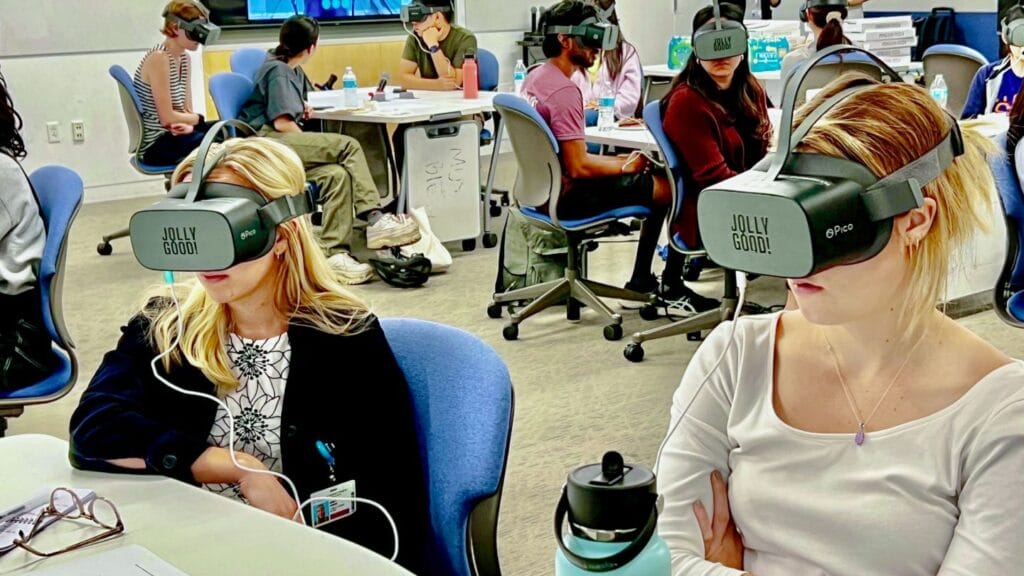
A new virtual reality platform helps simulate conversations between a terminally ill patient, a doctor and the patients’ family.
The platform, developed by Jolly Good US Inc., is designed to be a training module for nurses and caregivers who hope to go into palliative care, the company said.
The need for high-quality hospice and palliative care is an ongoing concern in senior living communities and nursing homes. It is also more cost-effective to have policies that cover hospice for nursing home residents living with dementia, McKnight’s recently reported.
VR’s potential as a training environment for caregivers is starting to gain popularity, and healthcare workers have responded positively to existing tech, recent studies show.
Jolly Good’s VR training system is the first of its kind geared toward palliative care, the company said.
The platform is designed to bridge the communication gap between hospice patients and caregivers, addressing a key factor influencing the disparity between the 90% of terminally ill older adults who express a desire to spend their final days at home or with family and the actual 30% who achieve this goal, according to Jolly Good’s data.
Recognizing the specialized concerns of palliative care, Jolly Good’s VR training offers a cost-effective and widely applicable tool for training workers, said Kei Ouchi, MD, associate professor of emergency medicine at Harvard Medical School. Jolly Good’s VR will be deployed at Harvard affiliate Brigham and Women’s Hospital.
“The VR technology allows learners to repeatedly high-stress, clinical situation from physician’s perspective regardless of location or time,” Ouchi said in a statement. “We expect that creating this dissemination strategy for evidence-based, palliative care communication skills will ultimately improve the quality of end-of-life care in the United States.”
Technology such as artificial intelligence, deployed for end-of-life purposes, still needs to allow for a personal or “warm” patient-caregiver relationship to be effective, one recent study asserts.


